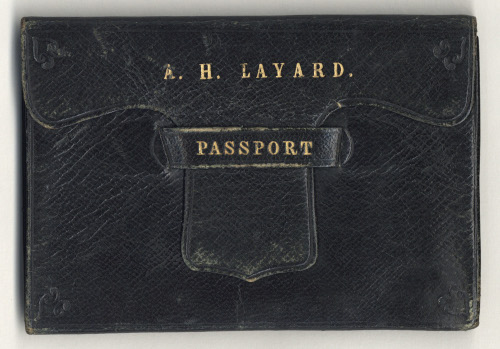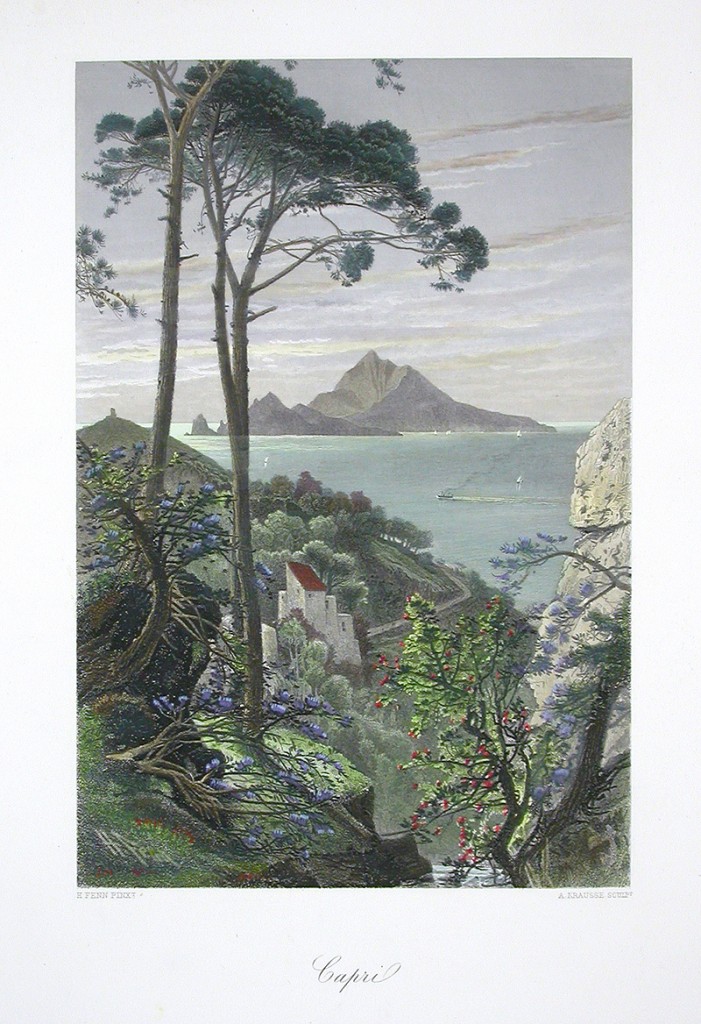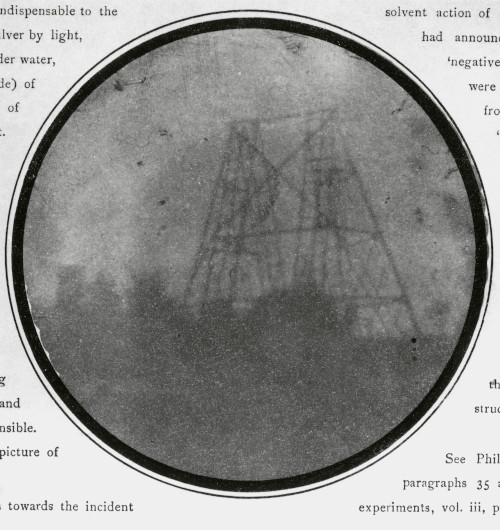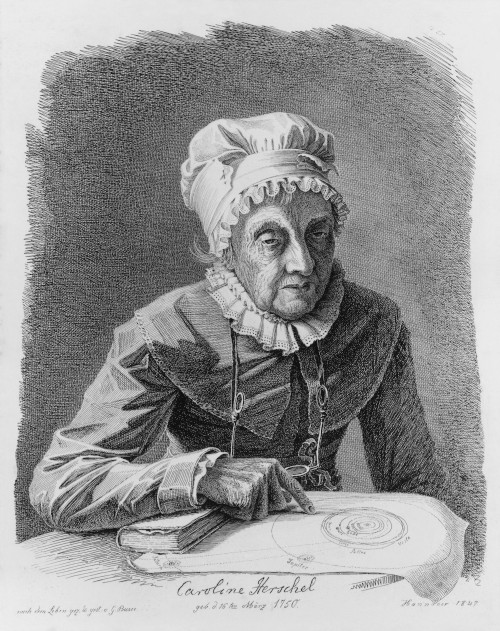This blog post forms part of History Day 2020, a day of online interactive events for students, researchers and history enthusiasts to explore library, museum, archive and history collections across the UK and beyond.
Use the Archives Hub, a free resource, to find unique sources for your research, both physical and digital. Search across descriptions of archives, held at over 350 institutions across the UK.
History Day 2020 coincides with the Being Human festival, the UK’s national festival of the humanities. Their theme this year is ‘New Worlds’, so taking this as our inspiration, we’re highlighting a range of archive collections – across Travel, Exploration, Space Exploration and Science Fiction.
Travel

Unearthing Family Treasures: The Layard and Blenkinsopp Coulson Archives
In 1839 a young lawyer left behind his London office for a post in the Ceylon (now Sri Lanka) Civil Service, thus beginning a series of travels, adventures and discoveries which would result in him achieving world renown for uncovering and shining a light on the ancient civilizations of Mesopotamia, in particularly Assyrian culture. That young man was Austen Henry Layard. Read the feature, by University of Newcastle Special Collections.
Papers of Elizabeth Thomson, 1847-1918, teacher, missionary, traveller and suffragette, c1914
Throughout the 1890s and 1900s Thomson travelled the world with her sister, Agnes, working as teachers and missionaries. The countries they visited include India, Japan, the USA, Germany and Italy. In the summer of 1899 Thomson reports that she visited Faizabad in India to learn Urdu but could not stand the heat and left for Almora in 1902. In 1907 she sailed to Bombay to complete missionary work, before teaching English in Sangor for the winter. In 1909 she travelled back to the UK, via Vienna, Prague, Dresden and Berlin, to settle in Edinburgh. Material held by University of Glasgow Archive Services – see the full collection description.

Sentimental Journey: a focus on travel in the archives
The hundreds of collections relating to travel featured in the Archives Hub shed light on multiple aspects of travel, from royalty to the working classes, and encompassing touring, business, exploration and research, the work of missionaries and nomadic cultures. Read the feature.
An abstract of a voyage from England to the Mediteranian: the diary of an anonymous English naval victualler, 1694-1696
Contains the log of an anonymous English naval victualler on a voyage from Gravesend in England to Cadiz in the Mediterranean between 31 December 1694 and 29 October 1696. Material is in English Spanish Latin Hebrew. Written in a single neat late seventeenth-century English hand with the text on each page set within faint ruled lines. There are many tables, diagrams, and quite finely-drawn illustrations of places en route, especially in Spain, and interesting objects, such as keys and seals. Material held by University of Leeds Special Collections – see the full collection description.
Bodiwan Papers, 1634-1923
The papers of Michael D. Jones and his family, which include numerous letters to Michael D. Jones from the Welsh settlers in Patagonia or relating to them, prior to the sailing of the Mimosa and after. Amongst them is a letter from Charles de Gaulle, the eminent Breton and Celticist, expressing his interest in the scheme to found a Welsh colony in Patagonia. Also, amongst the correspondents are L. Patagonia Humphreys, Rev. D. Lloyd Jones, Rhuthun and Mihangel ap Iwan and Llwyd ap Iwan. The papers reflect the hardship suffered by the new settlers as well as the investment made by Michael D. Jones in the venture. There are bills and receipts relating to the Mimosa, share certificates, statistics regarding population for 1879. Also, a bank pass book of the Welsh Colonising and General Trading Company Ltd, 1870-1883, and a register of the Welsh applicants to Patagonia, 1875-1876. The collection is held by Archifdy Prifysgol Bangor / Bangor University Archives – see the full collection description.
The London to Istanbul European Highway
Part of The National Motor Museum Trust Motoring Archive‘s Bradley Collection, including striking illustrations by Margaret Bradley. Read the feature.

Exploration
Cambridge Svalbard Exploration Collection, 1933-1992
The collection documents many decades of scientific work undertaken by (mostly) Cambridge researchers from 1938 until the early 1990s. These were mostly led by Walter Brian Harland (1917-2003), who also became the collator of the materials collected in Spitsbergen. The documentary archive complements the physical collection of geological specimens collected during those expeditions. Svalbard is located in the north-western corner of the Barents Shelf 650km north of Norway, and is named after the Dutch Captain, Barents, who is credited with the modern discovery of the islands in 1596 and after whom the Barents Sea is named. Collection held by Sedgwick Museum of Earth Sciences, University of Cambridge – see the full collection description.
Online Resource: Old Maps Online – provided by Great Britain Historical GIS Project, Maps Online is a search portal that combines the historical map collections of several organisations around the world. Users can search across collections through a single interface and easily locate multiple maps of a geographical area. The interface is free and access is open to all users. A wide range of different types of map are available, including: land maps; sea charts; boundary and estate maps; military and political maps; and town plans. Historical maps of many countries are available – including South and Central America from the 16th to the 20th centuries; Britain and particularly London, up to 1860; North America in the 18th and 19th centuries; pre-1900 Dutch Maps; the North West of England; and Moscow. More details.
Challenger Expedition Photographs, 1870s-1885; 1981-1983
HMS Challenger set out to collect specimens from different depths of water across the globe. The voyage took place between 1872 and 1876. It is thought that this was the first expedition to routinely use photography to document the journey. There was a darkroom on board so photographs could be developed on the ship. Material held by National Museums Scotland – see the full collection description.
Shackleton’s Endurance Expedition Centenary
27th October 1915: Antarctic expedition ship Endurance was abandoned on the orders of Sir Ernest Shackleton and their expedition became fight for survival. Read the feature by the Scott Polar Research Institute, University of Cambridge.
Space Exploration

Russian Space Exploration, 1903
Drawings, documents, photographs, ephemeral objects and memorabilia relating to early Russian space exploration. Objects include domestic items such as cigarette cases, ashtrays, cigarette ornamental dispensers, desk thermometers, ornamental lamps and tea glass holders. Included in the collection are photo albums and a press cutting album made by a school child as well as stamp collections. The collection boasts rare drawings by Konstantin Tsiolkovsky in which he envisaged the exit from a spacecraft into the vacuum of space as well as a drawing of a Reactive engine (Rocket engine); one of the first designs of its kind from c.1930. The collection is held by De Montfort University Archives and Special Collections – see the full collection description.
Jodrell Bank Observatory Archive, c.1924-1993
The Jodrell Bank Observatory is one of the world’s largest radio-telescope facilities. Originally known as the Jodrell Bank Experimental Station, it was renamed the Nuffield Radio Astronomy Laboratories in 1966, and changed to its current name in 1999. The first radar transmitter and receiver was installed by Bernard Lovell, then working as a physicist at the University of Manchester, at Jodrell Bank, Cheshire, in December 1945 (the University campus had proved unsuitable because of the high level of electrical interference). At this period Lovell was researching cosmic rays under the direction of Patrick Blackett, professor of physics at the University of Manchester. Lovell’s work involved studying radio echoes from large cosmic ray showers in the Earth’s atmosphere, using old military radars. As a result of this, Lovell went on to make important discoveries in meteoric astronomy. The collection is held by University of Manchester Library – see the full collection description.
The Herschel archive at the Royal Astronomical Society
The Royal Astronomical Society is the custodian of a significant collection of the astronomy-related papers of William, Caroline and John Herschel. Read the feature.

Science Fiction
Papers of Douglas Noël Adams, 1952-2001 (Circa.)
Douglas Noël Adams was born in Cambridge in 1952. He was awarded an exhibition to read English at St John’s College, Cambridge, obtaining his BA in 1974. While at Cambridge, Adams occupied himself chiefly in writing, performing in, and producing comedy sketches and revues, establishing connections that were to be integral to his future work. His career took off with ‘The Hitchhiker’s Guide to the Galaxy’, a six-part comic science-fiction radio series commissioned by the BBC in 1977 and broadcast in 1978. Novelisation and a second series were followed by further books in what became billed as ‘the increasingly inaccurately named Hitchhiker’s Trilogy’. The ‘Hitchhiker’s Guide’ series has taken many forms, including audio recordings; stage adaptations; a television series; a computer game; publication of the original radio scripts; radio adaptations of the remaining novels, and a film. Adams’s other creative work included writing and script-editing for BBC Television’s ‘Doctor Who’. Material held by St John’s College Library Special Collections, University of Cambridge – see the full collection description.
Papers of Brian Aldiss, 1966-1995
Brian Aldiss was born in 1925 in Dereham, Norfolk. After war service in the Royal Corps of Signals he entered the bookselling trade, working at Sanders & Co. in Oxford. His first work as a writer was The Brightfount Diaries, a fictionalised diary of a bookseller first published as a column in The Bookseller during 1954 and 1955 and published as one volume by Faber & Faber in 1955. The following year he became a full-time writer, and in 1957 his first science fiction book, the short story collection Space, Time and Nathaniel was published. His first science fiction novel, Non-Stop was published in 1958. Since then Aldiss has been a prolific writer, best known for his science fiction novels, novellas and short stories, including the award-winning Helliconia trilogy. He has also been a historian and critic of the genre, and has edited many science fiction collections. In addition, his ‘mainstream’ writing has included the novels The Male Response, Forgotten Life and the semi-autobiographical Horatio Stubbs sequence. He was elected a Fellow of the Royal Society of Literature in 1989. In 1990 he published his autobiography, Bury my heart at W.H. Smith’s. the collection is held by the University of Reading Special Collections Services – see the full collection description.
Other ‘New Worlds’
Pan-African Congress 1945 and 1995 Archive
The Pan-African Congress was a series of meetings, held throughout the world. In 1945 Manchester hosted the 5th Pan-African Congress. The Pan-African Congress was successful in bringing attention to the decolonization in Africa and in the West Indies. The Congress gained the reputation as a peace maker and made significant advance for the Pan-African cause. One of the demands was to end colonial rule and end racial discrimination, against imperialism and it demanded human rights and equality of economic opportunity. The manifesto given by the Pan-African Congress included the political and economic demands of the Congress for a new world context of international cooperation. material is held by the Ahmed Iqbal Ullah Race Relations Resource Centre – see the full collection description.
Records of the British Union for the Abolition of Vivisection, 1865-1996
The British Union for the Abolition of Vivisection (BUAV) was founded in 1898 by Miss Frances Power Cobbe (1822-1904). Concern for the welfare of animals was not a new phenomena, the first wave of anti-vivisection feeling in England commenced around the middle of the nineteenth century. The Second World War appeared to foster greater ideas of cooperation within the animal welfare movement. The Conference of anti-vivisection Societies first met on 20 November 1942. Five societies were represented at the invitation of BUAV ‘for the purpose of discussing and making plans for a joint intensive campaign, after the war, to claim the total abolition of vivisection as a necessary step towards securing for animals their rightful place in the new world order, which it is generally believed will follow the peace’. The immediate post war period began to see a rise in public demonstrations as a medium to spread the anti-vivisection message, in particular these were held outside vivisection laboratories. The collection is held by Hull University Archives, Hull History Centre – see the full collection description.
The Percy Johnson-Marshall Collection, 1931-1993
Percy Edwin Alan Johnson-Marshall (1915-1993) was one of the most energetic of a generation of town-planners who began their careers in the 1930s and, after the Second World War, dedicated their lives to the creation of a new world of social equity through the radical transformation of the human environment. Material held by Edinburgh University Library Special Collections – see the full collection description.
Find out more
- Follow us on Twitter @archiveshub and on Facebook
- Join our mailing list: to receive updates about what is on the Hub and tips for using archives in your research, please visit our jiscmail list to sign up.
- Information on how to search the Archives Hub: https://archiveshub.jisc.ac.uk/using/.
- User Survey 2020: whether you’re a first-time user or have used the Archives Hub for years, we’d really appreciate your feedback to help us develop the service! https://jisc.onlinesurveys.ac.uk/archives-hub-survey-2020 (or via our homepage) Thank you!
